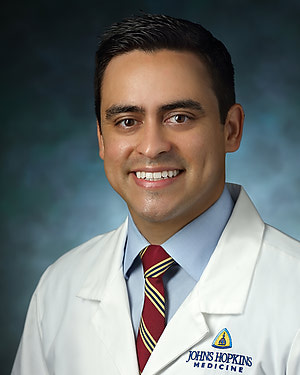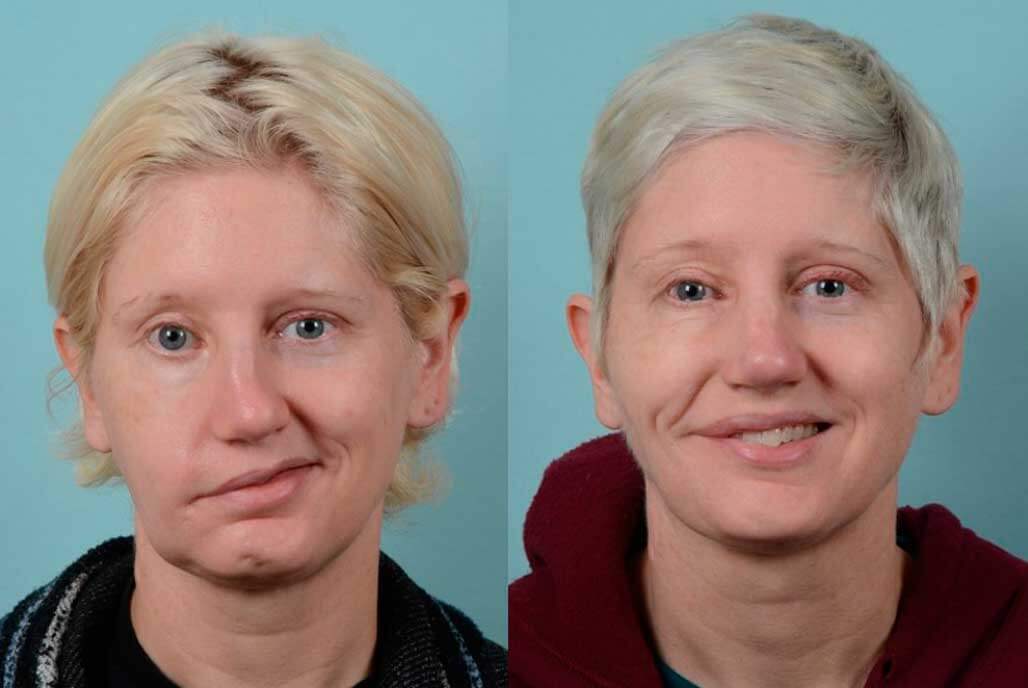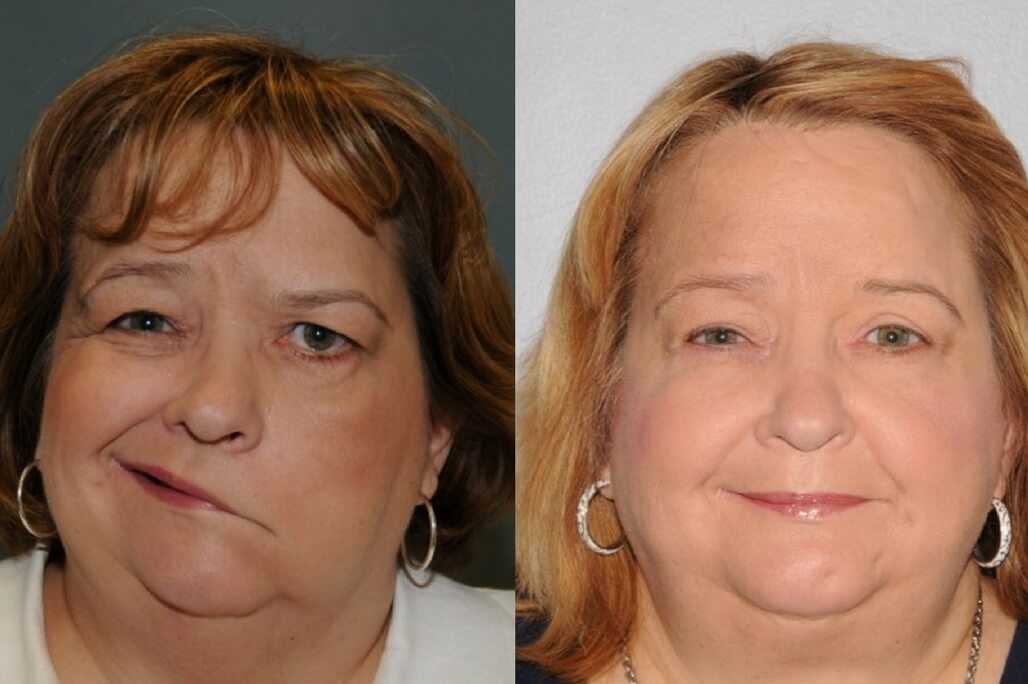-
Kofi Boahene, M.D.
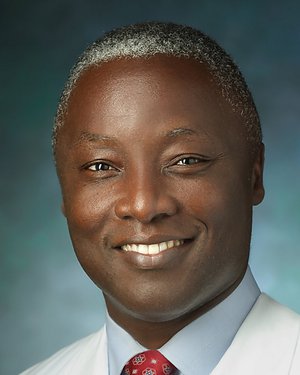
- Professor of Otolaryngology - Head and Neck Surgery
- Professor of Art as Applied to Medicine
- Professor of Dermatology
-
Shaun C. Desai, M.D.
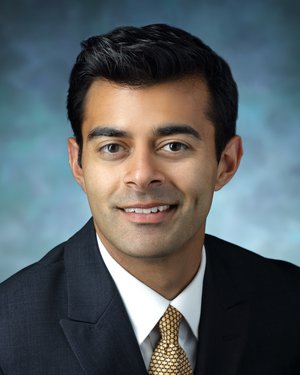
- Chief of Facial Cosmetic Surgery
- Co-Fellowship Director, Facial Plastic Surgery
- Associate Professor of Otolaryngology - Head and Neck Surgery
Supportive and Comprehensive Care
-
Appointment Locations
You can make an appointment at one of our convenient locations.
-
Patient Resources
Get answers to your questions about reconstructive procedures, including facial paralysis.
Request An Appointment
Schedule by phone
New and existing patients: 443-997-6467
Submit a request online
You may also request an appointment by filling out this form.
Our Services Conditions We Treat
Nerve damage due to trauma or other conditions, such as Bell’s palsy or acoustic neuroma, can lead to an inability to move the muscles of the face, on one side or both. Facial paralysis can make it difficult to speak, blink, swallow or smile. When facial paralysis does not resolve on its own, surgery can address the problem.
- Smile restoration
- Facial asymmetry
- Eyelid protection
- Blink restoration
- Unequal eye size
- Facial rejuvenation in facial paralysis
- Facial spasm
- Facial nerve tumors
- Lip incompetence
- Speech improvement
- Synkinesis
- Nasal obstruction
- Facial nerve schwannoma (in collaboration with the Facial Nerve Schwannoma Center)
What to Expect at Your Appointment
Our center offers options for improving facial paralysis from all causes and duration. During a consultation for facial paralysis, the surgeon performs a comprehensive facial examination to determine nerve and muscle function, static and dynamic asymmetries, facial movement deficits, facial asymmetries, eyelid, speech, nasal breathing dysfunctions and any eating challenges. Our multidisciplinary team of specialists provide input in the treatment plan to optimally meet the needs of each individual.
A number of non-surgical and surgical procedures can improve symmetry and restore movement to the upper and lower parts of the face. Some of these procedures involve moving facial nerves, tendons and muscles (or parts of them) from other areas of the body to the face.
Surgery to transplant muscle tissue may involve more than one procedure and hospital stays of few days for each stage. Your individualized treatment plan may involve one or more of these procedures:
-
When the facial nerve is injured, the facial muscles responsible for facial expression begin to slowly atrophy and eventually become irreversibly scarred. To stop and reverse this slow match to muscle death, the facial nerves must be repaired. The timing of the facial nerve repair is critical.
Our center has extensively studied the timeline for nerve repair and pioneered some of the algorithms currently used to determine facial nerve repairs. There are several options for facial nerve repair and transfer. Our clinicians determine the combination of nerve transfer procedures that will restore the best outcome on a case by case basis. Treatments offered at our center include the following:
- Hypoglossal nerve transfer- The hypoglossal nerve is the nerve that moves the tongue. It is a robust nerve and effective in restoring facial symmetry and symmetric lip movement when used in the repair of injured facial nerves. In this procedure, the surgeon identifies the hypoglossal nerve in the neck before the nerve enters the tongue. The injured facial nerve is then connected to the side of the hypoglossal nerve. The hypoglossal nerve then sprouts and grows through the facial nerve into the facial muscle to restore muscle tone and function. On average, the results from a hypoglossal nerve transfer is seen after 5.5 months. Our surgeons often combine hypoglossal nerve transfer with other nerve transfer to take advantage of its robust ability to restore lip movement during speech.
- Cross-facial nerve graft- In this procedure, the surgeons recruits normal facial nerve axons from the non-paralyzed side of the face to grow across the face to the paralyzed side to assist in facial movement. The unique feature of cross-facial nerve grafts is that, it is the only procedure that has the ability to restore spontaneous facial movement because the two sides of the face are linked in the brain. Cross-facial nerve grafts, when successful, allow coordinated movement between the normal and paralyzed facial sides.
The cross-facial nerve graft is often performed as an outpatient procedure. It requires the use of a conduit nerve, commonly the sural nerve harvested from the leg. The conduit nerve is connected to a branch of the normal facial nerve and then tunneled under the skin to the paralyzed face. This procedure is performed without any scars on the central face. The good nerve grows across the conduit at a rate of about 1mm a day. Both the surgeon and the patient can often track how far along the conduit the nerve has grown. - Direct facial nerve repair- The surgeon identifies the injured ends of a facial nerve, cleans them up and sutures them directly back together after perfectly aligning the nerve ends. If the ends cannot be brought together, the surgeon places a nerve graft to fill in the gap.
- Masseteric nerve transfer- The masseter nerve runs right next to the facial nerves and is an ideal choice for innervating the facial muscles when the facial nerve coming from the brain on the side of the paralysis cannot be accessed. Because of its close proximity to the facial nerves and muscles, results from transferring the masseteric nerve to the facial nerve can be seen as early as 3.5 months.
-
Treatments offered at our center include the following:
- Gracilis muscle transplant- Also known as, gracilis free flap. Gracilis muscle is a long and slender muscle located in the inner aspect of the thigh. The fibers of this muscle runs parallel to each other, similar to those of the facial muscle. A small segment of the gracilis muscle can be transplanted from the thigh to the face to replace facial muscle that are too weak to produce satisfactory facial expression or completely dead because of prolonged paralysis. It is also used in situations when the facial muscles did not develop in children such as in congenital facial paralysis or Mobius syndrome.
Our center has advanced the technique of transplanting the gracilis muscle as a single vector muscle flap to restore facial symmetry or a multiple vector muscle flap to produce a better smile with teeth display. In some cases, a small segment of the gracilis is also transplanted to improve eyelid blink and eyelid closure. The gracilis muscle transplant procedure often require a 1 to 3 days stay in the hospital. In select patients, the procedure can be performed as an outpatient procedure.
-
Other muscle transfer- There are other candidate muscles, besides the gracilis muscle that can be transferred for the correction of facial paralysis. This alternative muscles are selected based on their unique features and special clinical circumstances. Examples include: the pectoraalis minor muscle flap, latissimus muscle flap, platysma muscle flap, sternohyoid muscle flap and the omohyoid muscle flap.
- Gracilis muscle transplant- Also known as, gracilis free flap. Gracilis muscle is a long and slender muscle located in the inner aspect of the thigh. The fibers of this muscle runs parallel to each other, similar to those of the facial muscle. A small segment of the gracilis muscle can be transplanted from the thigh to the face to replace facial muscle that are too weak to produce satisfactory facial expression or completely dead because of prolonged paralysis. It is also used in situations when the facial muscles did not develop in children such as in congenital facial paralysis or Mobius syndrome.
-
Synkinesis is one of the undesired results of facial nerve injury and recovery. Synkinesis occurs when a desired facial movement is accompanied by another unwanted facial movement. A typical example of facial synkinesis is seen when an attempt to smile also results in an unwanted eyelid closure. In its mild form, synkinesis is often ignored but in moderate to severe cases, facial synkinesis can very debilitating. Patients who have suffered from Bell’s palsy often recover facial function with some degree of synkinesis.
There are several reasons why synkinesis occurs are facial nerve injury and recovery. These include misdirection of the facial nerves into the wrong muscle groups when they regrow, loss of insulation protein around facial nerves after injury, disturbances in electrical impulse move across previously injured facial nerves and changes in the brain centers that controls facial movement is not completely elucidated and as a result, current treatment options have mixed efficacy. Our center provides a comprehensive multilevel approach in the treatment of facial synkinesis. Treatments offered at our center include the following:
- Facial retraining exercise- Under the supervision of our specialist physical therapist, facial retraining techniques is designed for each patient based on specific facial tests. Facial retraining exercises for synkinesis aims to influence the brain centers controlling facia movement to suppress unwanted facial spasms and movement which enhancing desire facial movement. Our center uses contemporary techniques used in movement disorders to maximize the effectiveness facial retraining exercises.
- Selective chemodenervation- By selectively injecting neuromodulators such as Botulinum toxin (Botox), spastic and synkinetic group of facial muscle can be relaxed allowing the other facial muscles to more freely moved. Selective chemodenervation yields results that can last up to 4 months. Selective chemodenervation is use as the sole treatment in some cases or as a test for how effective surgical treatment can be.
- Selective myectomy- To reduce the tight muscles that distorts the face, limits eyelid opening and limits lip movement in synkinesis, selective myectomy (division of muscles) is often considered. Compared to injection of botulinum toxin), diving spastic and tight muscle permanently relaxes those muscle resulting in a longer lasting result. The specific muscle or group of muscle divide is carefully selected after a careful examination and muscle testing. Selective myectomy can be performed as an in-office procedure or under local or general anesthesia in the operating room. Patients who have undergone this procedure have benefited from more symmetric eye size, left neck and facial tightness and improvement smile with more dental (teeth) display.
- Selective neurolysis- In this procedure, the facial nerve branches are carefully exposed and sequentially tested with a nerve stimulator. The face is then monitored for the unwanted movement typical of facial synkinesis. The aberrant and abnormal nerves are selectively and purposefully divided leaving behind other more normal functioning nerve branches. Selective neurolysis has the potential of producing a more relaxed face and improved facial movement. This procedure is performed as an out-patient procedure under general anesthesia.
- Functional Muscle Transfer- In severe cases of synkinesis when chemodenervation, selective myectomy or neurolysis have failed to achieve the desired result, the tight and synkinetic facial muscle are removed and replaced with a new functional muscle such as the gracilis muscle.
-
Treatments offered at our center include the following:
- Gracilis muscle transplant- Also known as, gracilis free flap. For this procedure, the surgeon transfers a small portion of a thin muscle of the inner thigh to replace facial muscles.
To achieve a full smile with improved dental (teeth) display, our surgeons have advanced and mastered the use of the multi-vector gracilis flaps that closely simulates normal facial muscle movement. - Temporalis tendon transfer (T3)- The temporalis muscle is a fan shaped muscle that starts at the side of the head (temple) and attaches through a tendon to the jaw bone. By clenching the teeth, one can control the contraction of the temporalis muscle. The temporalis muscle tendon can be repositioned from the jaw to the lip in a single-stage procedure (the temporalis tendon transfer procedure) to simulate and substitute for the function of paralyzed facial muscles.
Our center has advanced minimally invasive techniques in performing this procedure without any facial scars. In a different version of this procedure, known as the temporalis lengthening myoplasty. During this procedure, your surgeon slides both the muscle from the temple to lengthen its effective reach and attach tendon to the lip for facial support and smiling. In either technique, the tension on the repurposed muscle and the site of attachment on the lip is carefully determined by muscle stimulation during the surgery to achieve the best result. The temporalis tendon transfer procedure is often performed as an outpatient procedure and is followed by facial retraining therapy under the guidance of facial physical therapists.
- Hypoglossal nerve transfer- The hypoglossal nerve is the nerve that moves the tongue. It is a robust nerve and effective in restoring facial symmetry and symmetric lip movement when used in the repair of injured facial nerves. In this procedure, the surgeon identifies the hypoglossal nerve in the neck before the nerve enters the tongue. The injured facial nerve is then connected to the side of the hypoglossal nerve. The hypoglossal nerve then sprouts and grows through the facial nerve into the facial muscle to restore muscle tone and function. On average, the results from a hypoglossal nerve transfer is seen after 5.5 months. Our surgeons often combine hypoglossal nerve transfer with other nerve transfer to take advantage of its robust ability to restore lip movement during speech.
- Cross-facial nerve graft- In this procedure, the surgeons recruits normal facial nerve axons from the non-paralyzed side of the face to grow across the face to the paralyzed side to assist in facial movement. The unique feature of cross facial nerve grafts is that it is the only procedure that has to ability to restore spontaneous facial movement because the two sides of the face are linked in the brain. Cross-facial nerve grafts, when successful, allow coordinated movement between the normal and paralyzed facial sides. The cross-facial nerve graft is often performed as an outpatient procedure. It requires the use of a conduit nerve, commonly the sural nerve harvested from the leg. The conduit nerve is connected to a branch of the normal facial nerve and then tunneled under the skin to the paralyzed face. This procedure is performed without any scars on the central face. The good nerve grows across the conduit at a rate of about 1mm a day. Both the surgeon and the patient can often track how far along the conduit the nerve has grown.
- Gracilis muscle transplant- Also known as, gracilis free flap. For this procedure, the surgeon transfers a small portion of a thin muscle of the inner thigh to replace facial muscles.
-
Treatments offered at our center include the following:
- Upper eyelid loading- The surgeon places a weight implant in the upper eyelid and eyelid closure.
- Lower eyelid procedures- Various techniques are used to vertically suspend the lower eyelid to improve eyelid closure.
- Orbital decompression for eyelid paralysis- In facial paralysis, patients who also have relatively prominent eyes, traditional methods such as upper eyelid loading with implants are not effective in improving blink and eyelid closure. In this case, orbital decompression may be used to reduce the eye prominence to improve eyelid closure.
- Cornea neurotization- Sensation is restored to the eye surface by rerouting surrounding sensory nerves to the cornea.
- Eyelid muscle reinnervation- Functioning facial nerve is connected from the normal side and routed to the paralyzed eyelid to improve eyelid blink and closure
- Functional muscle transplantation- For patients with longstanding eyelid paralysis, the atrophic eyelid muscle may be replaced by a transplanted muscle from the neck or inner thigh to restore eyelid tone and closure.
Meet Our Physicians
Facial Paralysis Treatment: Before and After Pictures
Gracilis Free Flap Surgery for Facial Reanimation | Kathy’s Story
After losing all movement on the left side of her face, Kathy consulted with Johns Hopkins facial plastic surgeon Kofi Boahene, M.D., who used a multiple vector gracilis free flap surgical approach for facial reanimation to create a complete smile instead of a Mona Lisa one. Within months of her surgery, Kathy began to get her smile back.


